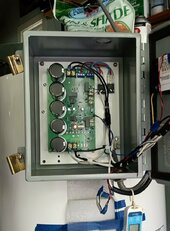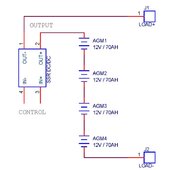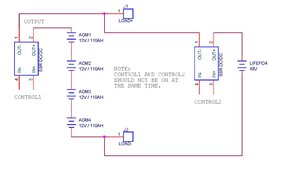efficientPV
Solar Addict
- Joined
- Sep 24, 2019
- Messages
- 1,449
First, many think volts and amps are interchangeable. They are not. High currents create large losses before even getting to a tank. A generic FET like the IRF4321 has 9.3mohm of resistance. Put four in parallel and it is 1/4 of that and it is still a lot of heat at 70A.Would you be able to make a sketch?
How do you come up with needing a 3500W element. I know many keep elephants and have to was them each day.
Solar is all day and that heating can be spread out. Large tanks can be counter productive. Multiple smaller tanks or tall tanks with multiple elements stratify and heat faster.
Heating from a battery is less efficient and uses expensive resources. It takes an extra KWH of battery for every KW of heating element.
Heating water should be done only with excess solar when it is generated. Unless you have a RV.
I have a system that operates in parallel with any charge controller. I have multiple tanks, each with their own controller, that operate on a priority basis. I have one for a 30 gallon tank in the garage only for laundry and all cycles use hot water. One or more can be on at the same time. No charge controller, inverter, or battery resources are used. No need to oversize anything which makes a super cost savings. It has arc interrupt and standard temperature controls can be used. Tanks can be daisy chained. One guy has the power go to a space heater once the tank is up to temperature. The control responds quickly to changing cloud conditions and keeps the panels near power point. It is proportional and will dump 5 to 1500W, whatever is the excess. I don't see why this isn't available other than the solar community doesn't understand it at all creating no demand. This is how simple the control is. There are dozens of ways to do this.





